To read Part One Click HERE
Introduction to Part 2
In Part 1 I gave an indication of the breadth and scope of the career of Winnie and started to explore her career as captain of Ireland up to the end of the ‘golden season’. In this Part 2 I will celebrate the later part of her career starting with this famous game in Belfast.

The Famous Dick Kerr Ladies Visit Belfast
Source: BNA Ireland’s Saturday Night Saturday 24 September 1921 p4
1921 Belfast – Ireland 1 v 6 England
Played Windsor Park on Wednesday 26th October 1921 – Crowd 12,000

Carmen Pomies has Now Joined the Dick Kerr Ladies
‘British Champions’ Signed Postcard of the Team
Source: Lizzy Ashcroft Collection
Mary Lyons ans Captain Winnie McKenna take on the Dick Kerr Ladies
The Northern Whig and Belfast Newsletter newspapers gave the following account in the run up to the match:
“The famous Preston team of lady footballers arrived in Belfast yesterday, and today will meet the Belfast ladies team, which has been considerably strengthened for the occasion. Dick Kerr’s XI, has the unique record this season of playing 23 games and winning the lot. They have registered 152 goals and, as compared with only 9 against them…”
“The Belfast team (strengthened) will be: Florrie Rance (Fleetwood), Hayden (Belfast), R Killiner (Belfast), Taylor (Newcastle), McKenna (captain) (Lurgan), Isobel Montgomery (Belfast), Maggie Shaw (Fleetwood), Harland (Belfast), Mary Lyons (Jarrow), Ruby Hall (Lurgan) and K Killiner (Belfast).”
The game was even more heavily advertised than previous games and was again organised by Diana Scott. MIss Stella Patrick-Campbell, the famous actress, who was appearing at the Opera House in Belfast, consented to kick off. It is interesting that two of the star northeast munitionettes of Irish descent, Winnie McKenna and Mary Lyons are appearing together in this famous game to represent Ireland.

LADIES FOOTBALL MATCH IN BELFAST
Miss Alice Kell (Dick Kerr’s Captain)
Mr W Moore (referee), Miss Winnie McKenna (Belfast Ladies Captain)
Source: BNA Belfast Newsletter Saturday 21 May 1921 p2
Lily Parr Hat Trick, Florrie Redford Brace and Alice Woods Header
The plucky Ireland team did their best and went in at half time 3 – 1 down. They spent most of the second half defending and conceded a further three goals. In a detailed match report the Northern Whig newspaper had this to say:
“The outstanding players of the visitors were Miss Harris at inside right and Miss Parr at outside left, while of the local ladies Miss McKenna was a splendid centre half and Miss Hall a thrustful inside left.”
The same newspaper noted “Miss [Alice] Woods heading a fine goal” which is very unusual to see in a report of women’s football in this era. After the game the teams were entertained with a host of dignitaries at Ye Olde Castle Restaurant in the centre of Belfast. Lots of gracious speeches were made and a large sum of money was raised for Belfast Hospitals (gate receipts of £300). Diana Scott was warmly thanked for organising the game. Alfred Frankland, manager of the Dick Kerr Ladies was applauded when he said:
“I hope that there is a silver lining to the dark cloud at present hanging over Ireland”
The Dick Kerr Ladies visited Windsor Park again in 1925 to play Femina Sport and in 1931 where the formidable Belfast footballer Molly Seaton gave them a very challenging game.
1923 Blackpool – Rest of UK 1 v 3 Dick Kerr Ladies
Played at Squires Gate, Blackpool on Wednesday 13th June 1923

Blackpool Carnival
Source: Lizzy Ashcroft Collection
Winnie McKenna only Irish Player in the Rest of UK Team
In June of 1923 Blackpool decided to throw off the long shadow of World War One with what appears to be the world’s biggest party. A week of Carnival was organised and the figures are astonishing. One hundred tons of confetti and two million coloured streamers were purchased. Daily processions of two to three miles in length took place and the Dick Kerr Ladies were accorded a float.
Ten weeks prior to this match the Dick Kerr Ladies incredible record of not being defeated since May 1920 (France, 2 v 1, at Stamford Bridge) came to a crashing end when my granny’s St Helens thrashed them by 5 v 1. Florrie Redford had followed her great friend Carmen back to France and several significant Dick Kerr Ladies had retired from football. Three of St Helen’s best players, Susie Chorley, Lydia Ackers and Lizzy Ashcroft (my granny) were recruited to the Dick Kerr Ladies. All three went on to have lengthy careers with my granny taking over the captaincy from Lily Parr in 1935 and leading only their second ever tour to the continent.
The player lining up opposite Lizzy Ashcroft at centre midfield in this famous game, was Winnie McKenna, in her last known high profile game on English soil.

Team Line Ups
Data: Courtesy Gail Newsham
Winnie McKenna – Last Game on English Soil
Rest of United Kingdom players Lily Buxton and Hilda Parkinson were actually Dick Kerr Ladies. They both lived in Blackpool and went on to have very lengthy careers with the Dick Kerr Ladies. Lily Buxton, who was born in Blackpool, scored for the Rest of United Kingdom. The goals for the Dick Kerr Ladies were scored by Lily Parr(2) and Lizzy Ashcroft.
Author’s Note
As a family we were only led to the story of our granny thanks to the wonderful life work of Gail Newsham and her book: “In a League of Their Own”, the story of the Dick Kerr Ladies. In a moving passage in her book Gail describes a float with ex-servicemen passing the Dick Kerr Ladies float. The servicemen stopped, stood up and saluted the Dick Kerr Ladies. I urge everyone to dig out that ‘old biscuit tin’ of photos from the loft and talk to your elderly relatives. It is unlikely that you will find that granny scored a goal alongside Lily Parr against the great Winnie McKenna, but you never know!
1927 Belfast – Ireland 2 v 3 Scotland
Played at Windsor Park on Monday 23rd May 1927

Molly Seaton and Sadie Smith
Rutherglen Ladies FC at Scottish National Football Museum
Source: Lizzy Ashcroft Collection
Winnie McKenna’s Last Hurrah as a Player
I refer to the 1920s in the years following the 1921 – 1922 ‘Ban’ season as the ‘Wilderness Years’ for women’s football in the United Kingdom. The Dick Kerr Ladies had what I refer to as an ‘annus horribilis’ in 1923. They lost 5 – 1 against St Helens, 1 – 0 against Stoke in the midland team’s last ever game and 2 – 0 against legendary Scottish Team Rutherglen. In 1925 the Dick Kerr Ladies made a valiant attempt to return women’s football to its previous glory with the magnificent tour of England, Scotland and Northern Ireland with Femina Sport. By 1927 it was up to the entrepreneurial James H Kelly of Rutherglen to lead the way with women’s football. He had carefully built up a model over 1925 and 1926 of touring with two teams, one called Rutherglen and one called Edinburgh. His star Rutherglen player by this point was Sadie Smith, grandmother of singer Eddi Reader. After their groundbreaking game in Dublin, mid-tour in May, he suddenly changed the designation of his teams to Scotland v Ireland. Recent research would suggest that he had found an Irish Superstar, Molly Seaton, with which to brand an ‘Ireland’ team, even if most of the team were actually Scottish. The team list for the Windsor Park game includes the interesting name: McKenna. It is plausible to suggest that the finding of talented Irish footballers such as Molly Seaton and Winnie McKenna led him to rebrand his football teams.
Winnie did not play in any further games. She was by now 29 years old and was sharing the pitch with some very talented youngsters. However, it is a lovely thought that she bowed out her magnificent career at Windsor Park playing for Ireland alongside Molly Seaton against Sadie Smith of Rutherglen. She was passing the baton to the next generation and retiring in style.
1932 – Successful Unmarried Business Woman

Advert in Belfast Telegraph, 1932
Source: BNA Belfast Telegraph Wednesday 18 May 1932 p1
Winnie Running Her Own Shop Belfast
Winnie was so successful in her chosen career as a hairdresser that she was able to open a business in Riddel’s Arcade in the centre of Belfast. Riddel’s Arcade was in Donegal Place and within sight of City Hall. Winnie was obviously doing very well for herself. The advert above from the Belfast Telegraph helps to prove that she worked hard as an employee and was now able to start her own business. Unfortunately, she fell out with Miss McKenzie who could not raise the considerable sum of £200 to be a joint partner in the business, so she was to be the sole proprietor. Riddel’s Arcade is now known as Queen’s Arcade and it is still a premiere trading location. The two shops fronting the entrance are now rented by Gucci and Rolex.
She was now 34 years old.
1936 Belfast – Ireland 1 v 4 France
Played at Grosvenor Park on Monday 10th August 1936

Left: Winnie McKenna Kicking off in Stylish Fashion
Right: Carmen Pomies, Jimmy Warnock, T Pendleton, Bill McCleery, Molly Seaton
Source: BNA Wednesday 12 August 1936 p12
Winnie McKenna – Football Administrator and Fundraiser
This was a remarkable game for a number of reasons. The two most significant female organisers of high profile women’s football in this era were Diana Scott and Carmen Pomies. Diana Scott was married to Walter Scott who was very influential in Belfast football and political circles. Winnie is therefore a member, with Carmen Pomies, of the very elite club of unmarried women who organised high profile international football matches.
Between 1932 and 1938, with the exception of 1934, when the Belgian national team toured with Carmen acting as interpreter, Carmen Pomies organised and led French teams over to tour England. 1936 was very special because she did this twice in the same year, with the second tour including a visit to Northern Ireland. In late May/ early June the team toured England with games in Southsea, Ryde, Bristol, Kettering and Southampton against the Dick Kerr Ladies. A combined French/ Dick Kerr Ladies also played Yeovil in Yeovil. In late July/ early August Carmen brought another French team over to tour, which played in Heanor, Blackpool, Bacup and Nelson against the Dick Kerr Ladies. The team also travelled to Belfast for a game against an Irish XI led by Molly Seaton. As in 1932 the Dick Kerr Ladies manager helped ‘franchise’ the French football visit to Belfast. Margaret Thornborough (eventually to become assistant manager of Dick Kerr Ladies) was accompanied by one of their star players, Edith Hutton. Edith was originally advertised as playing for Ireland due to her Irish parentage. Margaret can be seen in the photo below to the left at the back. Edith is at the back in front of the window. Also at the back, just behind Carmen Pomies, is the most important man in the history of women’s football, Dick Kerr Ladies manager, Alfred Frankland. Alfred passed away in 1957 at the age of 74. He had worked tirelessly to promote women’s football since the Dick Kerr Ladies first game in 1917. This was before the advent of modern communication methods and in the face of relentless obstacles from the English FA.

Carmen Pomies, Sir Crawford McCullough (Mayor), Winnie McKenna
Source: BNA Northern Whig Tuesday 11 August 1936 p12
The photo above shows the French team and their friends the Dick Kerr Ladies being welcomed at City Hall in Belfast. It is essential to emphasise just how important the women footballers were. When my granny and the Dick Kerr Ladies, together with Femina Sport, were guests at the Houses of Parliament and Mansion House in London in 1925 they were greeted at Victoria Station by several Admirals. This photograph is taken at the rear of City Hall in Belfast where there is a turning circle around a fountain for the mayoral charabanc. As well as visiting City Hall they were also taken to the Parliament Buildings at Stormont and spent the afternoon at Gallaher’s Cigarette Factory. (Gallaher’s was during its time one of the biggest tobacco factories in the world and employed several hundred women in this era.) The Irish team was: Vance (Jennymount Mill), Clarke (Whiteabbey Mill), Kearney (Belfast), Parkington, Forsythe (Barbour’s Mill), Mary Seaton (captain) (Whitehouse), McClaughlin (Whitehouse), Butler (Whitehouse), Kane (Whitehouse) and Lynch. I think of the previous 1932 game as ‘the battle of Grosvenor Park’ as both Carmen Pomies and Mollie Seaton had to retire hurt, with Molly spending the night in Victoria Hospital. This 1936 ‘return’ fixture was again scheduled for 7.15pm at Grosvenor Park. 2,000 spectators watched an astonishing game with the Northern Whig reporting:
“It was a feast of fun from beginning to end, with free fights intermingled with football of which no Irish League team need be ashamed” .
In fact, after one Molly Seaton challenge just before half-time Carmen Pomies marched her team off and only some swift diplomacy from Alfred Frankland persuaded them back on. The match was refereed by T Pendleton and the lines were run by Jimmy Warnock (Irish fly-weight boxing champion) and Billy McCleery (legendary footballer and cricketer). At half-time Mr Pendleton entered the dressing room (different times!) and addressed both teams who apparently were mixing freely and happily. They were admonished that unless: “tempers were toned down, hands cut out, and feet only used for legitimate purposes” he would have to adopt drastic measures. Despite this the paper goes on to say that in the second half there were a couple of incidents that would have drawn marching orders in a male Irish league game. One of the Irish girls had to sit out for 10 mins following a kick on the shins but to quote:
“The French girl who was responsible did not get off entirely scot-free, and unless the double cushions are unusually soft she is not likely to sit long on the boat going back.”
The French girls were worthy winners but sportingly agreed that the scoreline flattered with two of the goals being attributed to the shortness of the Irish goalkeeper, Mlle Lefebure.

Miss Winifred McKenna – organiser of the match
Miss Butler, the Irish centre-forward
Source: BNA Northern Whig Wednesday 12 August 1936 p12
The picture above is the last known photo of Winnie McKenna kicking a football. She was 38 years old and an unmarried, successful businesswoman. Miss Butler, centre-forward and employee of one of the Whitehouse linen mills watches on in her resplendent green Ireland top. Captain Molly Seaton is watching the kick off in what is to be her last great international football match. Ready to do battle on the opposing French side is the most important woman footballer in history: Carmen Chantelle Marianne Pomies – Dick Kerr Lady and French captain.
This is one of my favourite photos.
Ambassador Mckenna – The Lioness Who Roared for Ireland

Carmen Pomies and Florrie Redford
Source: Courtesy Pen and Sword Books
Some Random Thoughts
I can thoroughly recommend the above book: “Carmen Pomies – Football Legend and Heroine of the French Resistance” written by my good friend Chris Rowe and published by Pen and Sword. In fact, I would go as far as to say that it is necessary reading to understand the history of women’s football. To use footballing terminology, myself and historian Helge Faller have major ‘assists’ in this wonderful book. At the start of Chapter 6 I am quoted:
“Carmen Pomies was the glue holding together women’s football in Europe in the interwar years”
My friend Chris is now in his 80s and still very dapper and erudite. He has been a professional historian for his whole life and expresses in his book how shocked he was to have reached his 70s before coming across the name Carmen Pomies. Chris uses the term ‘ambassador’ for Carmen. This is a very special accolade for someone whose career spanned several decades. I think the same term can be applied to Winnie McKenna. She was also an ambassador.

Margaret Thornborough, Carmen Pomies, Lizzy Ashcroft
Footballers and Leaders
Source: Lizzy Ashcroft Collection
“Footballers Who Happened to be Women”
My friend the film director Francis Castelli has a short film on his website: “Bobby Charlton – Learning from A Legend”. In the film the 80 year old Charlton takes a shot in front of some school children in his suit and shoes. The shot is a ‘ripper’, with timing, poise and power. The viewer is left thinking ‘Cor, he has still got it.’ In a similar fashion, I am often asked about my Granny, Lily Parr, ‘the ban’, etc. A key point is that my granny and Lily Parr (and others) were not ‘women who took up football’, they were ‘footballers who happened to be women’ – it was in their DNA. I came across the image of Winnie McKenna kicking off the 1936 game several years ago and I was really struck by the image. This is no music hall starlet toe-poking the ball to start the game. This is a footballer.

Molly Seaton – Belfast Legend
Irish Sporting Lives
Source: Courtesy Royal Irish Academy
Passing the Baton
Terry Clavin and Turlough O’Riordan of the Royal Irish Academy have produced a wonderful book: “Irish Sporting Lives”. 60 significant Irish sports men and women have been chosen from over 500 on their database. As well as the ‘usual suspects’ such as George Best, Jackie Charlton, Alex Higgins, Joey Dunlop, etc there are a host of fascinating characters across every sport and every generation. Six new biographies were commissioned including mine on Molly Seaton and she now takes her rightful place amongst the greats. A new entry was also commissioned about Anne O’Brien, written by Helena Byrne. Like her contemporaries, Rose Reilly and Edna Neillis of Scotland and Sue Lopez of England, Anne had to seek fame and fortune as a footballer in France and Italy due to the long shadow cast by the 1921 English FA Ban and the antediluvian social culture of the 1970s. All sixty entries are fascinating but in terms of football I would point out two more entries. William ‘Bill’ McCracken is a well known Irish and Newcastle footballer who is credited with being responsible for the changing of the offside rule from 3 to 2 players. He was a fascinating and colourful character and he had a significant role in supporting women’s football in World War 1. Lady Mary Heath (aka Sophie Elliot-Lynn) seems to have lived several lives, book-ended by tragedy. Before she became the most famous female aviator in the world in the 1930s she was a renowned athlete and played an important role in setting up and leading the Women’s Amateur Athletic Association in 1922 with Major W B Marchant. She took a leading role in the challenge of legitimising women’s participation in track and field athletics in the 1920s. It wasn’t until 1928 that women were allowed to compete in the 800m at the Olympic Games. Due to false media reports the distance was removed as ‘too much for women’ and not reinstated until 1960. Football is not the only sport with a long and weary battlefield for women.
Conclusion to Part 2
There are so many people to thank. I have leaned heavily on the work of Patrick Brennan, Gail Newsham, Professor Fiona Skillen, Alex Jackson and others. Margaret Roberts’ fine genealogy research when I was drawing a blank researching Winnie’s backstory was incredibly thorough and helpful. My thanks to Ralph Hewitt at the Belfast Telegraph and Sean McClaughlin at the Derry Journal for believing in Molly Seaton and Sadie Smith and helping me to launch their stories spectacularly in 2019. This led on to my work in Scottish Football history with Professor Fiona Skillen at Glasgow Caledonian University and Richard McBrearty at the Scottish Football Museum. My thanks to Terry Clavin and Turlough O’Riordan at the Royal Irish Academy. I urge everyone to read their wonderful book: “Irish Sporting Lives”. My thanks to Chris Rowe, Helge Faller, Ruairi Bolton, and Mark Krisson for their help and support.
I have been a somewhat obsessive women’s football history researcher for several years now. I have approximately 100 ring binders of research following approximately 100 football teams. Until a few weeks ago, Winnie McKenna was just, in my view, one of a number of secondary characters in the northeast munitionettes scene (along with Mary Lyons, Minnie Seed, Mary Dorrian, Sarah Cornforth and others). I must confess to being astonished at what I have been able to uncover. I now think that she is one of the most important woman footballers in history. She helps to demonstrate the incredible links between the northeast, northwest, Northern Ireland, Scotland and the fact that those links persisted all the way through from the latter end of World War 1 to just prior to World War 2. She played with, and against, all the great players of her day and was feted many, many times as the best, or one of the best players, on the pitch. I personally would give the accolade of ambassador to three legends of women’s football: Alice Kell (captain of the Dick Kerr Ladies), Carmen Pomies (Dick Kerr Lady and captain of Femina Sport/ France) and Winnie McKenna. This is part 2 of my sincere tribute. In part 3 I will begin to explore her munitionette career in more detail.
This is a very personal story for me. Northern Ireland is a wonderful place. The Giant’s Causeway, Antrim Coast, Cave Hill, Cathedral Quarter, Maritime Quarter and Sailortown, Walled City, Sperrin Mountains, etc are all stunningly beautiful. The people are warm, friendly and welcoming. They are very direct and no-nonsense. I have been asked (more than once), “how come you are doing the Molly Seaton story”, the implication being ‘you’ as an outsider. I am an outsider but my partner is from Northern Ireland. I have visited many, many times and my two sons are lucky to have Anglo/Irish heritage. If you are not aware there is a long and complex history in this part of the world which can still cast shadows. I urge anyone who is interested to book a three hour taxi tour of Belfast. You are not told whether you will have a Catholic or a Protestant taxi driver and you are taken, quite safely, to areas that would normally be off-limits to tourists. It is an eye opener. I am very keen to emphasise that I am writing about magnificent footballers from a long time ago, not politics or religion and I have used the terminology of the time. For the second city of Northern Ireland some people prefer Derry and some people prefer the term Londonderry, some are not bothered. The politically correct terminology is Derry/Londonderry or as local wags took to calling it: “stroke city”. I think that a sense of humour can help us through most things?
Read Part 3 HERE
Article © of Steve Bolton, January 2023

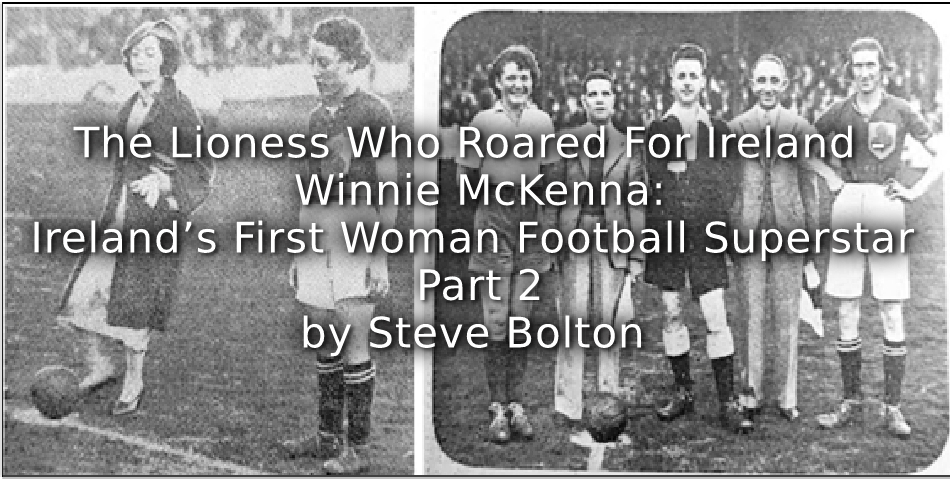
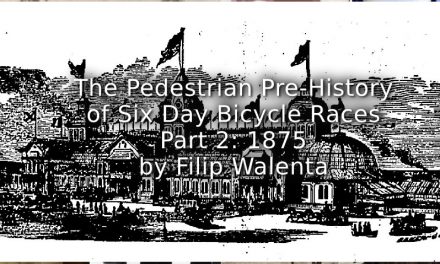
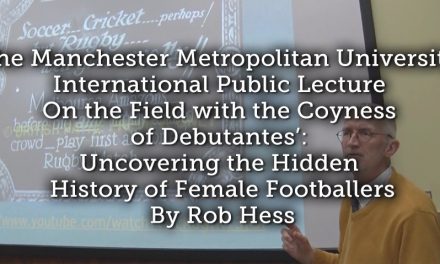
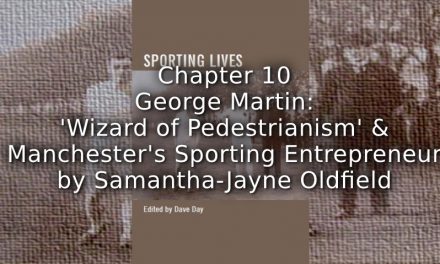
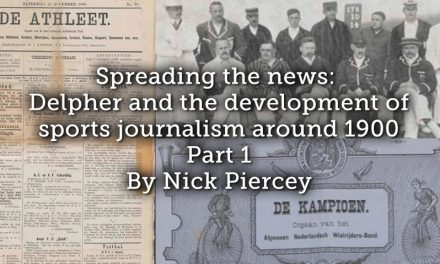
Looking forward to the munitionette career stories now Steve !!!!!!!!
Hi Mike
This has been a real challenge to research! I am standing on the shoulders of people like Patrick Brennan.
Thank you for your kind words. Really appreciated.
Steve